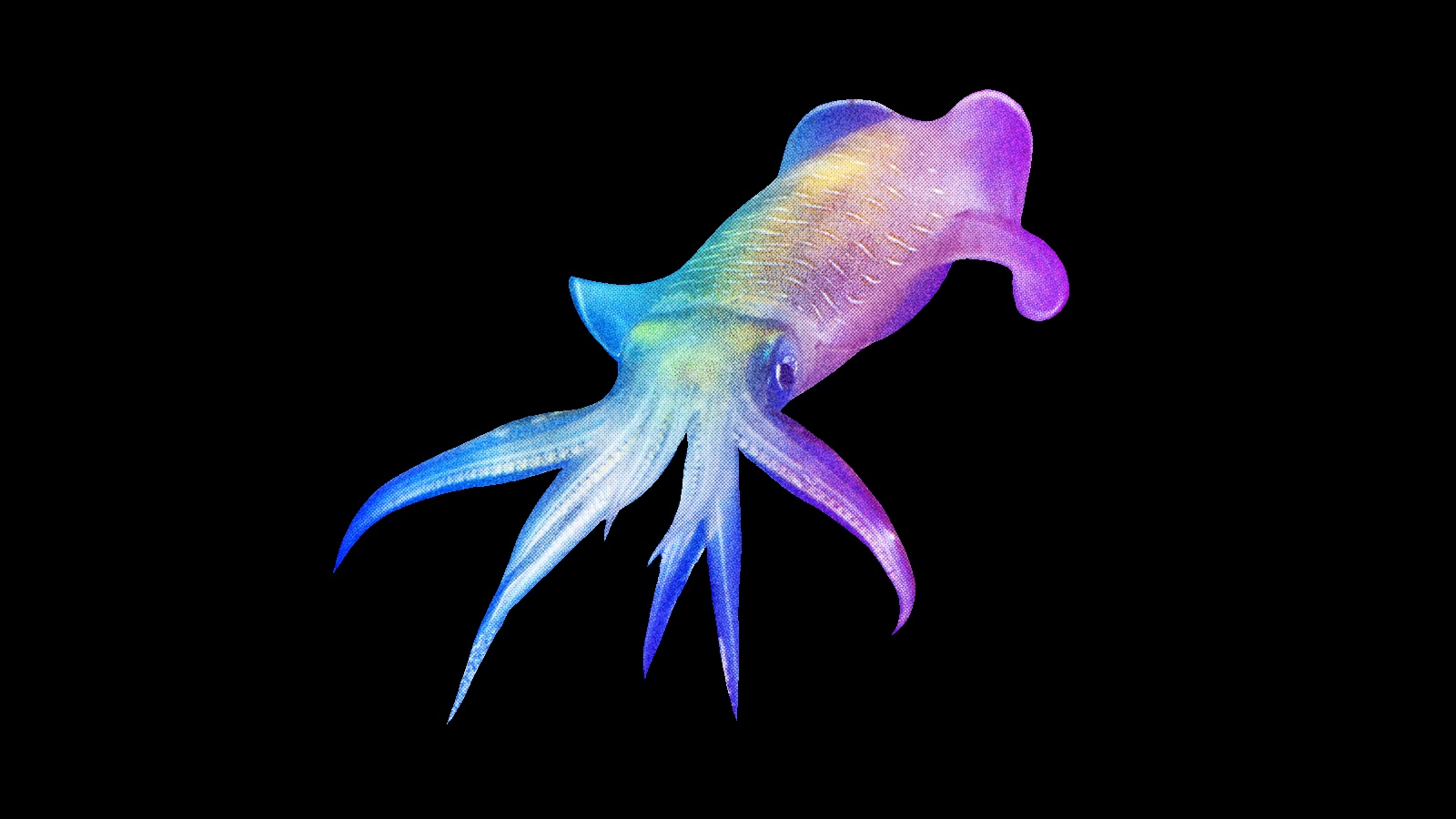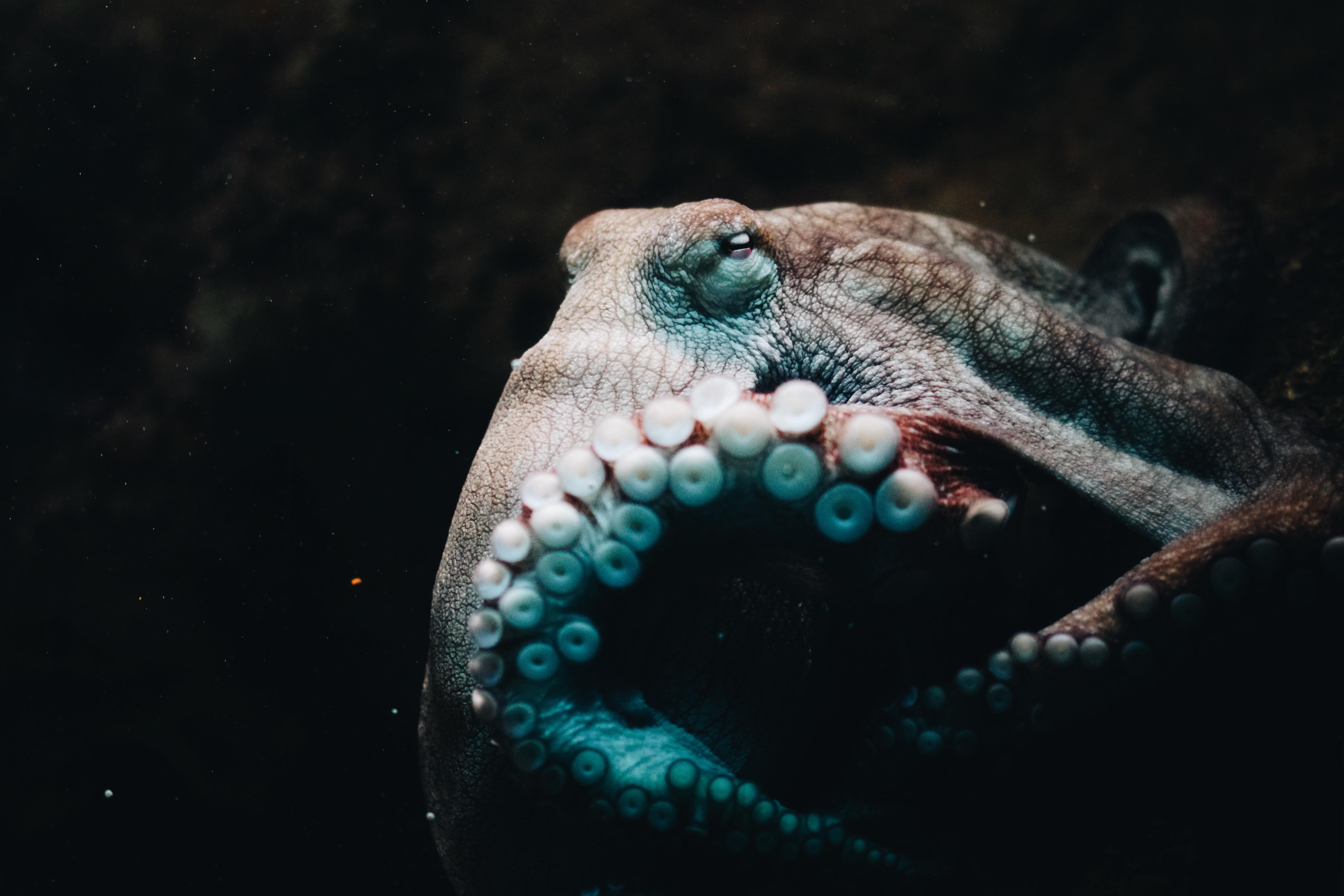Watch as video shows squid turning translucent at the moment of death. Here’s the science of why

- YouTube has several videos showing fishermen karate chopping squid to kill them, making the animals turn translucent almost instantly.
- Squid skin is full of pigment-containing cells called chromatophores that are controlled by minuscule muscles. When squid die or are rendered deeply unconscious, these cells relax, making the chromatophores shrink to their smallest size.
- A karate chop could be a humane way to kill a small or medium-sized squid, provided the person dealing the blow is practiced enough.
YouTube is full of videos showing fishermen — almost all of them Australian — employing a swift, hard “karate chop” to dispatch squid that they had caught. The apparently lethal strike makes the multi-armed mollusks instantly turn translucent.
Questions abound about what’s depicted in these videos: Why do the animals swiftly and dramatically lose their color? Are the squid actually dead, or merely stunned? Is this really a humane method to kill squid, as most of the fishermen in the videos suggest? And is squid karate another weird Australian thing, like eating Vegemite?
We’ll leave that last question alone and address the first three.
First, why do the squid turn translucent almost instantaneously after being “karate chopped”? Like octopuses and cuttlefish, squid skin is covered in pigment-containing cells called chromatophores. These are controlled by minuscule muscles, which are in turn controlled by the nervous system. When the muscles contract, the cells widen. When they relax, the cells shrink. This physiological setup thus allows squid to change their skin color, an ability they use for camouflage and signaling.
Since the function of chromatophores is dictated by the nervous system and ultimately the brain, when nervous system activity ceases, perhaps through death or deep unconsciousness, the muscle-controlling cells will relax, thus making the cells shrink. If death or unconsciousness occurs suddenly, as apparently happens after the “karate chop,” the effect can occur quite quickly, transforming what was a maroon squid one moment into a white one the next.
Second, are the squid in these videos dead or simply stunned into unconsciousness? Experts I consulted with said it is difficult to tell. It’s possible that the focused strike is damaging enough to crush the animals’ ring-shaped brain, which is only protected by a cranium of semi-hardened cartilage. It’s also possible that the strikes sever a key nerve that communicates with the chromatophore-controlling muscles.
Researchers at Stanford University have conducted experiments on squid in which they snip a key nerve that connects the brain to chromatophores on one side of the body. When they do, that half of the squid becomes pale and translucent. But fascinatingly, within a matter of days, some of the chromatophores on that side start to function again. This may be because the nerve is starting to repair itself. Alternatively, the chromatophores might be getting signals from someplace else. The researchers hypothesized that light-sensing cells in the skin might also be able to stimulate the chromatophores, meaning that changes in a squid’s color could be both consciously and subconsciously controlled, just like breathing for humans.
Third, is a “karate chop” really a humane way to kill a squid? Provided the fisherman is practiced enough, such a strike could inflict a quick death. However, the method becomes increasingly ineffective for larger and larger animals. And a misaimed or meager chop might mean that more blows are needed to finish the job.
Clyde Roper, an emeritus research zoologist at the National Museum of Natural History, has been studying squid and other cephalopods for more than a half century. He said in an email that a “quick knife thrust longitudinally through the brain” is probably the surest and most humane way to kill a squid, but lamented that most fishermen would likely consider the method “too time consuming.”





